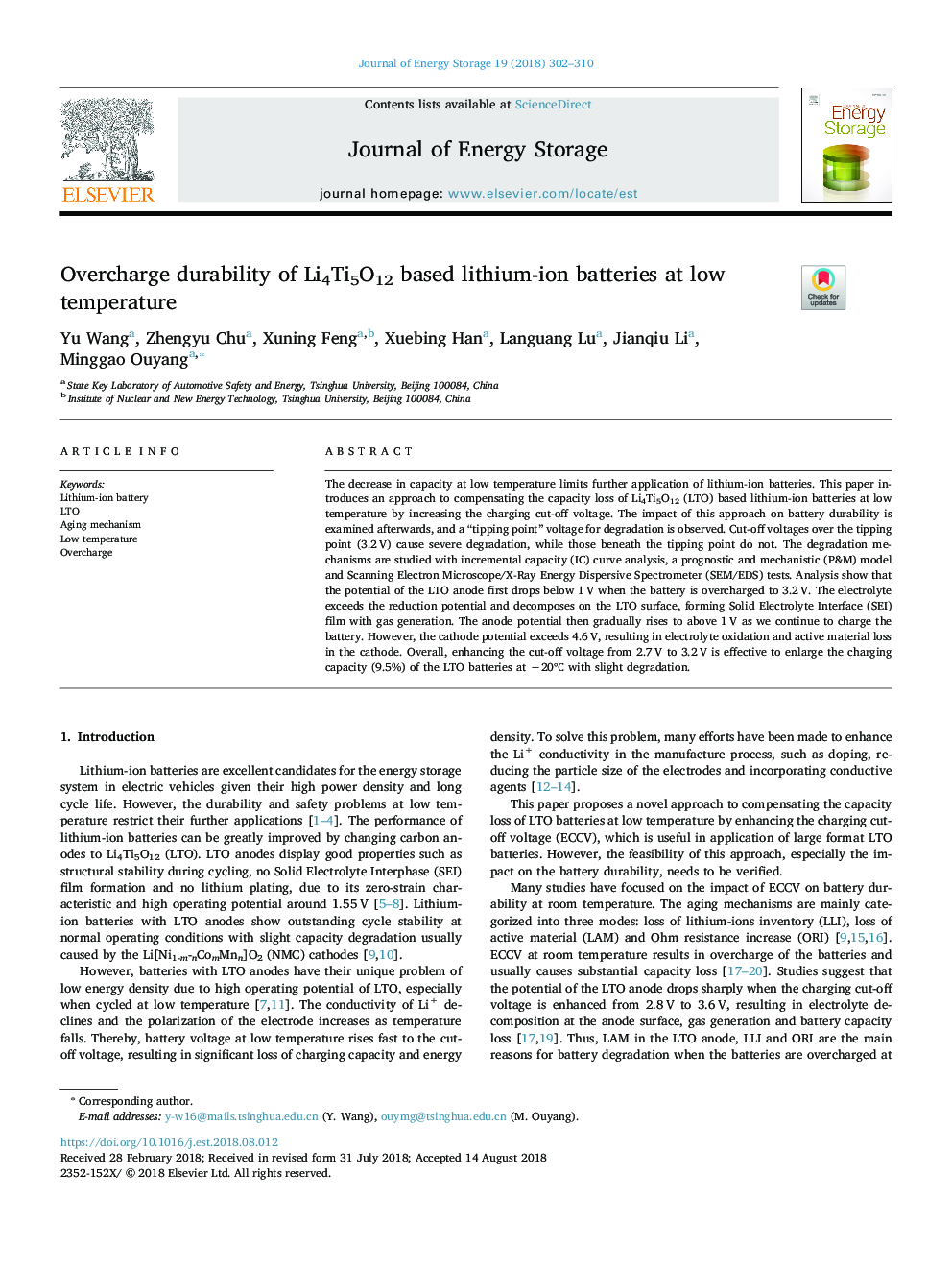| Article ID | Journal | Published Year | Pages | File Type |
|---|---|---|---|---|
| 11425369 | Journal of Energy Storage | 2018 | 9 Pages |
Abstract
The decrease in capacity at low temperature limits further application of lithium-ion batteries. This paper introduces an approach to compensating the capacity loss of Li4Ti5O12 (LTO) based lithium-ion batteries at low temperature by increasing the charging cut-off voltage. The impact of this approach on battery durability is examined afterwards, and a “tipping point” voltage for degradation is observed. Cut-off voltages over the tipping point (3.2â¯V) cause severe degradation, while those beneath the tipping point do not. The degradation mechanisms are studied with incremental capacity (IC) curve analysis, a prognostic and mechanistic (P&M) model and Scanning Electron Microscope/X-Ray Energy Dispersive Spectrometer (SEM/EDS) tests. Analysis show that the potential of the LTO anode first drops below 1â¯V when the battery is overcharged to 3.2â¯V. The electrolyte exceeds the reduction potential and decomposes on the LTO surface, forming Solid Electrolyte Interface (SEI) film with gas generation. The anode potential then gradually rises to above 1â¯V as we continue to charge the battery. However, the cathode potential exceeds 4.6â¯V, resulting in electrolyte oxidation and active material loss in the cathode. Overall, enhancing the cut-off voltage from 2.7â¯V to 3.2â¯V is effective to enlarge the charging capacity (9.5%) of the LTO batteries at â20â with slight degradation.
Related Topics
Physical Sciences and Engineering
Energy
Energy (General)
Authors
Yu Wang, Zhengyu Chu, Xuning Feng, Xuebing Han, Languang Lu, Jianqiu Li, Minggao Ouyang,
